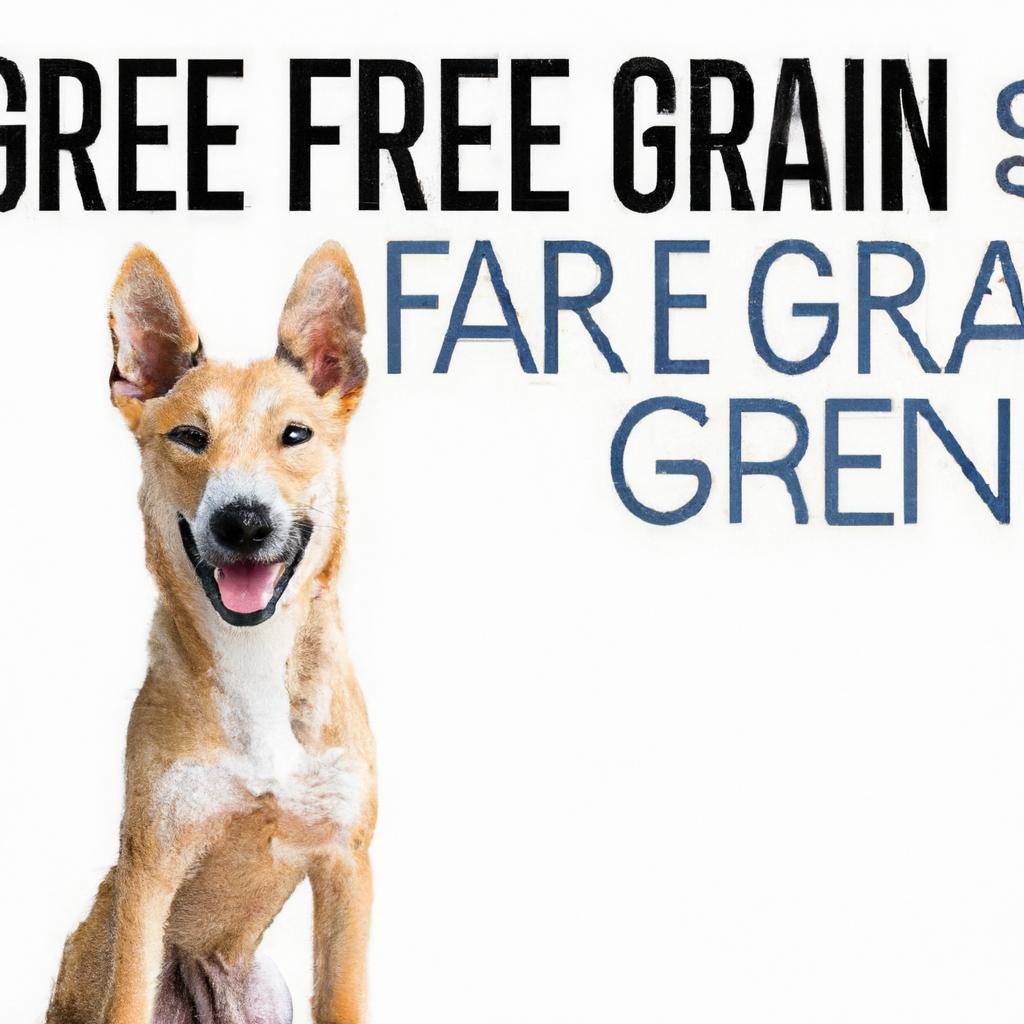When Bella, a lively golden retriever, started scratching incessantly and her coat lost its shine, her owner, Sarah, grew concerned. After a vet visit, they discovered Bella had a grain sensitivity. Switching to grain-free food transformed her health—her energy returned, her coat gleamed, and the scratching stopped. If your dog shows signs like itching, digestive issues, or lethargy, it might be time to consider grain-free options. Consult your vet to ensure your furry friend thrives on the right diet. Your dog’s happiness depends on it!
Contents
- Understanding Your Dogs Nutritional Needs for Optimal Health
- Identifying Signs That Indicate a Need for Grain-Free Diet
- Evaluating the Benefits of Grain-Free Food for Your Dog
- Consulting with Veterinarians for Tailored Dietary Recommendations
- Q&A
Understanding Your Dogs Nutritional Needs for Optimal Health
Determining whether your dog requires a grain-free diet involves careful observation and understanding of their unique needs. **Allergies and sensitivities** are common reasons pet owners consider this dietary shift. If you notice symptoms such as itching, excessive scratching, or gastrointestinal issues like diarrhea or vomiting, it may be time to evaluate their food. Consulting with your veterinarian can help identify if grains are the culprit behind these discomforts.
Another factor to consider is your dog’s **age and activity level**. Puppies, active breeds, and working dogs often have different nutritional requirements compared to older or less active dogs. Grain-free diets can provide higher protein levels and more digestible carbohydrates, which may be beneficial for energetic dogs. However, it’s essential to ensure that the diet is balanced and meets all of your dog’s nutritional needs.
Additionally, consider your dog’s **breed and health conditions**. Certain breeds are more prone to specific health issues, such as heart disease or obesity, which can be influenced by diet. For instance, some studies suggest a link between grain-free diets and dilated cardiomyopathy (DCM) in certain breeds. Therefore, it’s crucial to research and understand how a grain-free diet may impact your dog’s health based on their breed and any pre-existing conditions.
Lastly, pay attention to your dog’s **overall well-being** after making any dietary changes. Monitor their energy levels, coat condition, and weight. A successful transition to grain-free food should result in improved vitality and a shiny coat. If you notice any adverse effects, it may be worth reconsidering the diet or seeking professional guidance to ensure your dog’s nutritional needs are being met effectively.
Identifying Signs That Indicate a Need for Grain-Free Diet
When considering a grain-free diet for your dog, it’s essential to be vigilant about certain signs that may indicate a need for dietary change. One of the most common indicators is persistent gastrointestinal issues. If your dog frequently experiences symptoms such as **diarrhea**, **vomiting**, or **excessive gas**, it could be a sign that their digestive system is struggling to process grains. Observing these symptoms consistently should prompt a closer look at their diet.
Another critical sign to watch for is **skin irritations** or **allergic reactions**. Dogs that are sensitive to grains may develop rashes, itching, or hot spots. If you notice your dog scratching more than usual or if they have red, inflamed skin, it may be time to evaluate their food. Additionally, ear infections can also be a red flag; recurrent infections may suggest an underlying food sensitivity, often linked to grain consumption.
Weight management can also be a telling factor. If your dog is struggling to maintain a healthy weight, whether they are overweight or underweight, it could be due to the ingredients in their food. Grain-heavy diets can lead to weight gain in some dogs, while others may not be able to absorb nutrients effectively, leading to weight loss. Monitoring your dog’s weight and overall body condition can provide valuable insights into their dietary needs.
Lastly, consider your dog’s overall energy levels and behavior. A sudden change in energy, such as lethargy or hyperactivity, can be linked to their diet. Dogs that are not thriving on their current food may exhibit signs of **fatigue**, **irritability**, or **restlessness**. If you notice these behavioral changes alongside other symptoms, it may be time to consult with your veterinarian about transitioning to a grain-free diet that better suits your dog’s individual needs.
Evaluating the Benefits of Grain-Free Food for Your Dog
When considering a shift to grain-free food for your dog, it’s essential to evaluate the potential benefits that such a diet can offer. Many pet owners have reported improvements in their dogs’ overall health and vitality after making this change. Grain-free diets often contain higher levels of protein and healthy fats, which can contribute to better muscle development and energy levels. This can be particularly beneficial for active breeds or dogs that require a higher caloric intake.
Another significant advantage of grain-free food is its potential to alleviate food sensitivities and allergies. Dogs can be sensitive to certain grains, leading to symptoms such as itching, digestive upset, or skin irritations. By eliminating grains from their diet, you may notice a reduction in these issues, resulting in a happier and more comfortable pet. **Common signs that your dog may benefit from a grain-free diet include:**
- Frequent scratching or licking
- Digestive problems, such as gas or diarrhea
- Dry, flaky skin or dull coat
- Weight management issues
Additionally, grain-free diets often incorporate a variety of alternative ingredients, such as sweet potatoes, peas, and lentils, which can provide essential nutrients and fiber. These ingredients not only support digestive health but also offer a rich source of vitamins and minerals that contribute to your dog’s overall well-being. By choosing a grain-free option, you may find that your dog enjoys a more balanced diet that meets their nutritional needs without the potential drawbacks of grains.
Lastly, it’s important to consider your dog’s individual health needs and lifestyle when evaluating the benefits of grain-free food. Consulting with your veterinarian can provide valuable insights tailored to your dog’s specific circumstances. They can help you determine if a grain-free diet is appropriate based on your dog’s age, breed, activity level, and any existing health conditions. Making informed choices about your dog’s diet can lead to a happier, healthier life for your furry companion.
Consulting with Veterinarians for Tailored Dietary Recommendations
When considering a dietary change for your dog, consulting with a veterinarian is essential for obtaining personalized advice tailored to your pet’s specific needs. Veterinarians possess a wealth of knowledge about canine nutrition and can assess your dog’s health status, lifestyle, and any underlying conditions that may influence their dietary requirements. This professional insight is invaluable in determining whether a grain-free diet is appropriate for your furry friend.
During your consultation, be prepared to discuss various factors that could impact your dog’s diet, including:
- Age and breed: Different breeds and life stages have unique nutritional needs.
- Health conditions: Existing health issues, such as allergies or sensitivities, may necessitate a grain-free diet.
- Activity level: An active dog may require a different balance of nutrients compared to a more sedentary one.
Your veterinarian may also recommend specific tests or evaluations to rule out food allergies or intolerances. This thorough approach ensures that any dietary changes are based on solid evidence rather than trends or assumptions. By understanding your dog’s individual health profile, your veterinarian can help you make informed decisions about their nutrition.
Ultimately, the goal is to enhance your dog’s overall well-being. A veterinarian can guide you in selecting high-quality grain-free options that meet your dog’s nutritional needs while avoiding potential pitfalls associated with improper feeding practices. By collaborating with a veterinary professional, you can ensure that your dog receives a balanced diet that supports their health and happiness.
Q&A
-
What are the signs that my dog may need grain-free food?
Look for symptoms such as:
- Frequent gastrointestinal issues (diarrhea, vomiting)
- Skin irritations or allergies
- Excessive itching or scratching
- Low energy or lethargy
If your dog exhibits any of these signs, it may be time to consider a grain-free diet.
-
Are certain breeds more prone to grain sensitivities?
Yes, some breeds are more susceptible to grain sensitivities, including:
- Boxers
- Bulldogs
- Terriers
- Retrievers
If you own one of these breeds, monitoring their diet closely is essential.
-
How can I transition my dog to a grain-free diet?
Transitioning should be done gradually to avoid digestive upset. Follow these steps:
- Start by mixing a small amount of grain-free food with their current food.
- Gradually increase the proportion of grain-free food over 7-10 days.
- Monitor your dog for any adverse reactions during the transition.
A smooth transition can help your dog adjust better to the new diet.
-
Should I consult a veterinarian before switching to grain-free food?
Absolutely! Consulting your veterinarian is crucial because:
- They can help identify any underlying health issues.
- They can recommend the best grain-free options for your dog’s specific needs.
- They can guide you on proper nutrition to ensure a balanced diet.
Your vet’s expertise will ensure that your dog’s dietary change is safe and beneficial.
understanding your dog’s dietary needs is crucial for their health and well-being. If you notice signs of allergies, digestive issues, or lethargy, consider consulting your vet about grain-free options. Your furry friend deserves the best nutrition!




